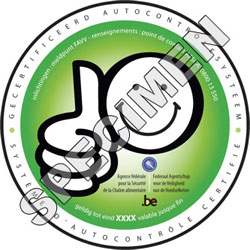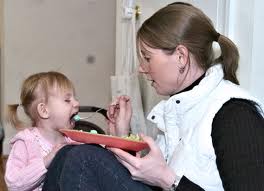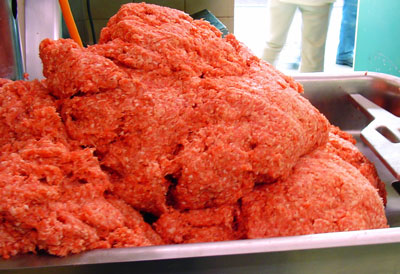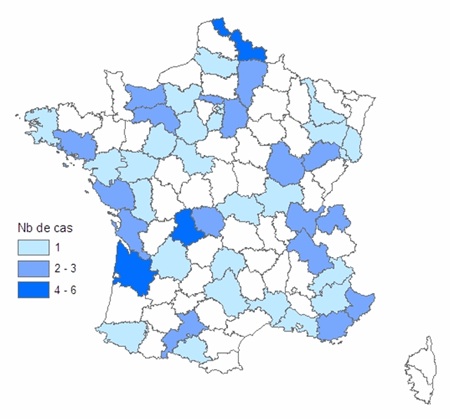Nikki Marcotte, a new student, tries out her translation skills on a piece from French food safety blogger, Albert Amgar.
I n Conseil National de l’Alimentation’s newsletter No. 13, dated June 11, 2010, we learn about health safety: an increased effort between the three unions of the Groupement National de la Restauration.
n Conseil National de l’Alimentation’s newsletter No. 13, dated June 11, 2010, we learn about health safety: an increased effort between the three unions of the Groupement National de la Restauration.
“Given the issues with health safety and nutrition in the catering business, these three entities (the National Institutional Restaurant Services Union, the National Fast-Food and Food Union, the National Union of Themed and Commercial Restaurants, all three members of the GNR) have decided to combine forces and work together on these common problems. Three work groups have been created, each with two representatives from each syndicate, all experts in issues of ‘hygiene’, ‘nutrition’ and ‘quality’.”
One of the work groups has devoted their time to food safety. What is their objective?
The goal of the work group, in regard to regulatory requirements and their recent developments, is to pool together technical skills and the scientific expertise required to validate certain methods of disease control common to various restaurant activities: time-temperature combinations/storage temperatures of foods in certain conditions, microbiological monitoring methods…
According to the Ministry of Agriculture, “Industrial and restaurant catering is comprised of commercial food services (approximately 15% of meals served) and collective food services (85% of meals served). The latter represents close to 4 billion meals.”
Collective food service professionals contribute to three different areas: education (school catering, 1 billion meals, and university catering), health and social services (hospital, nursing home and prison catering), and the workforce (business and administrative catering). Likewise, process hygiene criteria have been implemented.
The ministry also tells us that there are more than “…30,000 inspections conducted annually in the three large collective food service sectors, including nearly 13,000 in the school catering area. In particular, these checks are aimed at ensuring:
– good food preparation practices (in terms of the hygiene and handling of the equipment), transport and storage (with respect to the hygiene and handling of the equipment);
– the cold chain;
– the recommendations concerning the use of pasteurized eggs to prevent foodborne illnesses associated with salmonella.”
“More than 30,000 inspections…” of which we know nothing about, not even one annual statistic… (transparency, where are you?).
This blog, which is always ready to help food service professionals with these excellent initiatives, wishes to make a contribution with this recent publication .png) from the barfblog team, see, “Food safety information posted in restaurant kitchens can improve meal safety.” Source: Chapman, Benjamin; Eversley, Tiffany; Fillion, Katie; MacLaurin, Tanya; Powell, Douglas. Assessment of Food Safety Practices of Food Service Food Handlers (Risk Assessment Data): Testing a Communication Intervention (Evaluation of Tools). Journal of Food Protection®, Volume 73, Number 6, June 2010, pp. 1101-1107(7).
from the barfblog team, see, “Food safety information posted in restaurant kitchens can improve meal safety.” Source: Chapman, Benjamin; Eversley, Tiffany; Fillion, Katie; MacLaurin, Tanya; Powell, Douglas. Assessment of Food Safety Practices of Food Service Food Handlers (Risk Assessment Data): Testing a Communication Intervention (Evaluation of Tools). Journal of Food Protection®, Volume 73, Number 6, June 2010, pp. 1101-1107(7).
This blog could also suggest to the Ministry of Food less opacity in these inspections so that the consumer is fully informed, and to maybe also think about the scoring system or grades on the doors of restaurants or to start slowly putting the inspection results online. Also look at the “smiley” example in Belgium (above right).
 Three children and one adult were transported to the hospital "for observation" and a dozen other victims had to be hospitalized.
Three children and one adult were transported to the hospital "for observation" and a dozen other victims had to be hospitalized.
 is to accomplished in a hamburger patty. And while thorough cooking to the appropriate temperature (the. U.S. says 160) will destroy the bad bugs, cross-contamination in any kitchen – home, food service, retail – is a huge issue and difficult to control. Here’s the story.
is to accomplished in a hamburger patty. And while thorough cooking to the appropriate temperature (the. U.S. says 160) will destroy the bad bugs, cross-contamination in any kitchen – home, food service, retail – is a huge issue and difficult to control. Here’s the story..jpg) Poitou-Charentes et Rhône-Alpes regions. For Casino, the center and the southwest quarter of the country are concerned.
Poitou-Charentes et Rhône-Alpes regions. For Casino, the center and the southwest quarter of the country are concerned..png) I’m also not a fan of guides to good practices of which, in my opinion, we shouldn’t expect so much. The guide shouldn’t be a white cane for the blind when it comes to matters of hygiene and food safety. But I also know that some people have been waiting, according to a message published on la liste Hygiène on July 3, 2010, “…for at least 8 years, [for] the
I’m also not a fan of guides to good practices of which, in my opinion, we shouldn’t expect so much. The guide shouldn’t be a white cane for the blind when it comes to matters of hygiene and food safety. But I also know that some people have been waiting, according to a message published on la liste Hygiène on July 3, 2010, “…for at least 8 years, [for] the .jpg) obligation applicable for us? I don’t believe so according to certain reports we see (see “Hygiene in the food service industry”).
obligation applicable for us? I don’t believe so according to certain reports we see (see “Hygiene in the food service industry”). n Conseil National de l’Alimentation’s newsletter No. 13, dated June 11, 2010, we learn about health safety: an increased effort between the three unions of the Groupement National de la Restauration.
n Conseil National de l’Alimentation’s newsletter No. 13, dated June 11, 2010, we learn about health safety: an increased effort between the three unions of the Groupement National de la Restauration..png) from the barfblog team, see, “Food safety information posted in restaurant kitchens can improve meal safety.” Source: Chapman, Benjamin; Eversley, Tiffany; Fillion, Katie; MacLaurin, Tanya; Powell, Douglas. Assessment of Food Safety Practices of Food Service Food Handlers (Risk Assessment Data): Testing a Communication Intervention (Evaluation of Tools). Journal of Food Protection®, Volume 73, Number 6, June 2010, pp. 1101-1107(7).
from the barfblog team, see, “Food safety information posted in restaurant kitchens can improve meal safety.” Source: Chapman, Benjamin; Eversley, Tiffany; Fillion, Katie; MacLaurin, Tanya; Powell, Douglas. Assessment of Food Safety Practices of Food Service Food Handlers (Risk Assessment Data): Testing a Communication Intervention (Evaluation of Tools). Journal of Food Protection®, Volume 73, Number 6, June 2010, pp. 1101-1107(7). eport the outbreak until May 28, 2010, and used a
eport the outbreak until May 28, 2010, and used a .jpg)
 passengers on a school charter bus originating in Lot and traveling on the highway between Le Mans and Tours were stricken with malaise (they barfed a lot).
passengers on a school charter bus originating in Lot and traveling on the highway between Le Mans and Tours were stricken with malaise (they barfed a lot).

 A traceback showed that these sausages came from the same batch produced in a single firm in France, distributed nationally during the first two weeks of March 2010. The best by date for this batch extends from June 1 to 15, 2010.
A traceback showed that these sausages came from the same batch produced in a single firm in France, distributed nationally during the first two weeks of March 2010. The best by date for this batch extends from June 1 to 15, 2010. The captain of the Marshall Islands-flagged Arionas reported the deaths overnight, French officials said, adding that the source of the food poisoning was not known.
The captain of the Marshall Islands-flagged Arionas reported the deaths overnight, French officials said, adding that the source of the food poisoning was not known. War accounted for nearly all consumption, now make up just seven per cent of those eaten.
War accounted for nearly all consumption, now make up just seven per cent of those eaten. According to
According to